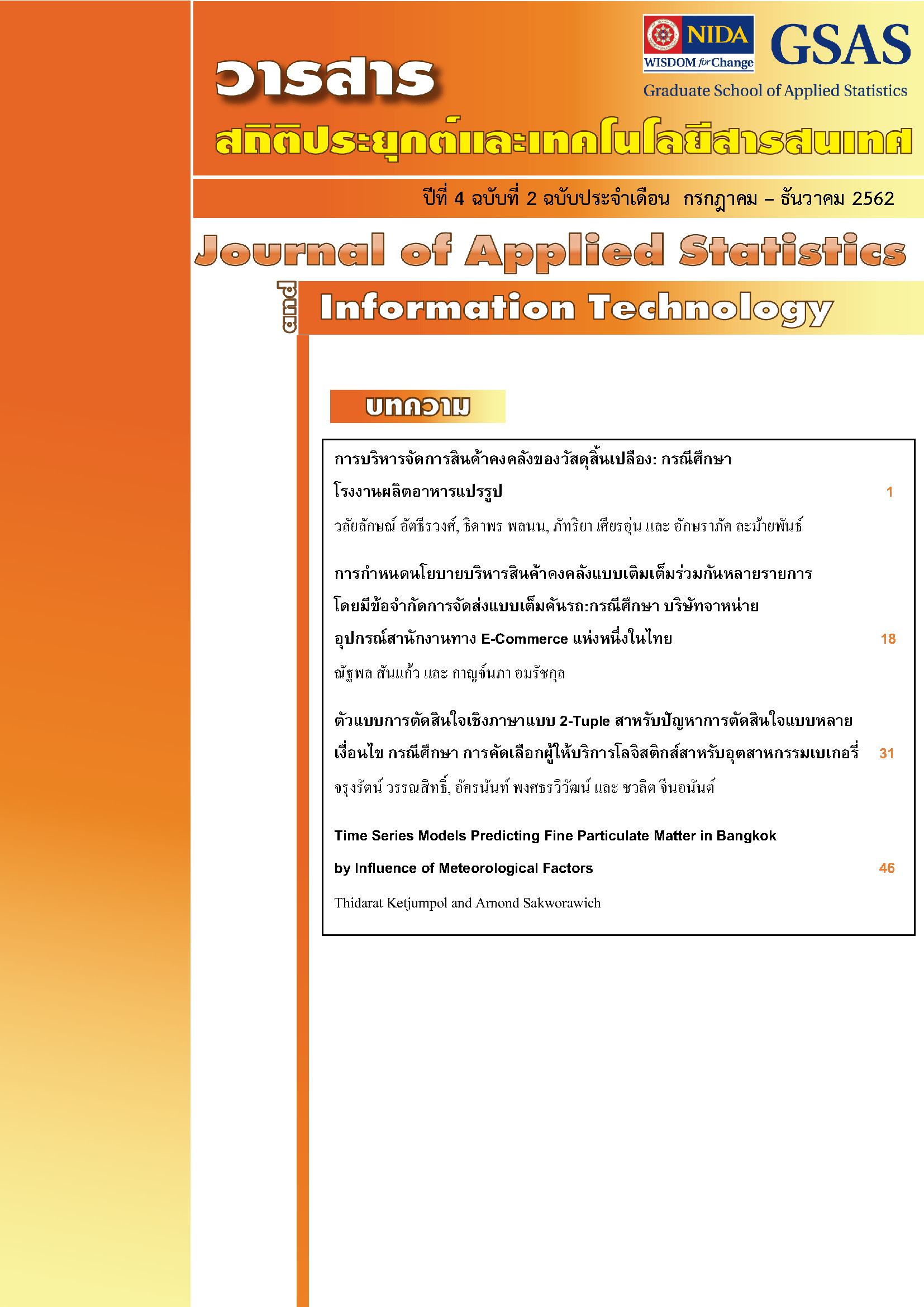Time Series Models Predicting Fine Particulate Matter in Bangkok
Keywords:
PM2.5, Fine particulate matter, BangkokAbstract
This research applied time series models to investigate factors that related to fine particulate matter concentration in Bangkok. The factors are wind speed, wind direction, temperature, relative humidity and rain from 1 January 2017 to 31 December 2018 by Pollution Control Department of Thailand. The result revealed that there are relation between PM2.5 concentration and hourly effect, monthly effect, the interaction effect between hourly effect and wind speed, the interaction effect between monthly effect and wind speed. Two-Pass Estimation is used to estimate the model because data characteristic is multi-seasonality times series. So dummy variables are needed. Monthly effect strongly influences on PM2.5 concentration that relates to the season of Thailand and the highest months are January and February. Wind speed is a factor which has a high negative relation with PM2.5 concentration because southwesterly wind blows and carries PM2.5 particles. Furthermore, during the cool season from November to February, southwesterly wind is weak and Bangkok is covered with areas of high air pressure. This promotes PM2.5 accumulation and shows hourly effect obviously in that month.
Downloads
Published
How to Cite
Issue
Section
License
เนื้อหาและข้อมูลที่ปรากฏในบทความที่ตีพิมพ์ในวารสารสถิติประยุกต์และเทคโนโลยีสารสนเทศถือเป็นความคิดเห็นส่วนบุคคลของผู้เขียนแต่ละท่าน ความผิดพลาดของข้อความและผลที่อาจเกิดจากนำข้อความเหล่านั้นไปใช้ผู้เขียนบทความจะเป็นผู้รับผิดชอบแต่เพียงผู้เดียว บทความ ข้อมูล เนื้อหา รูปภาพ ฯลฯ ที่ได้รับการตีพิมพ์ในวารสารถือเป็นลิขสิทธิ์ของวารสาร หากบุคคลหรือหน่วยงานใดต้องการนำทั้งหมดหรือส่วนหนึ่งส่วนใดไปเผยแพร่ต่อหรือเพื่อกระทำการใดๆ จะต้องได้รับอนุญาตเป็นลายลักอักษรณ์จากวารสาร ก่อนเท่านั้น



